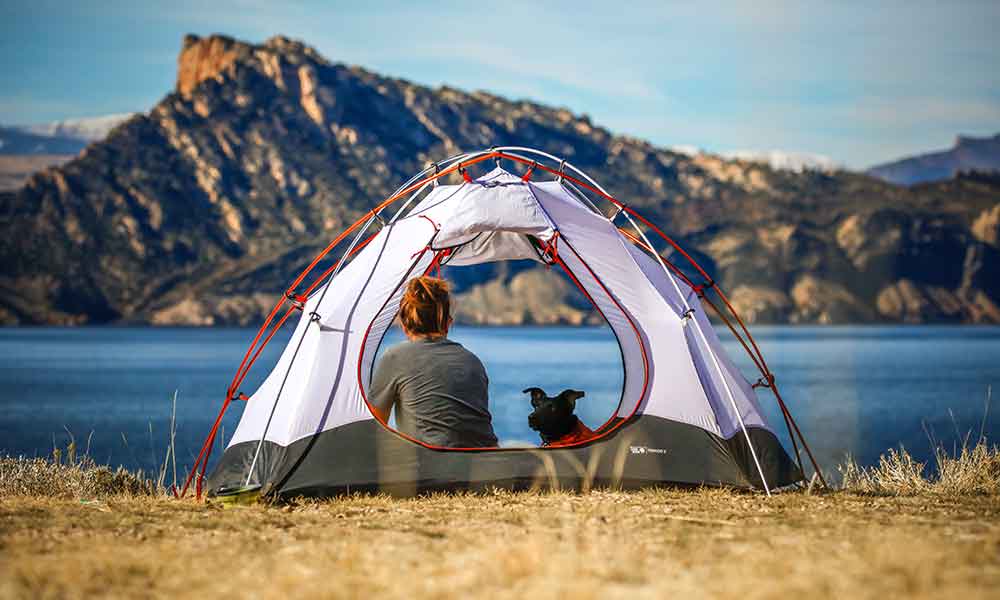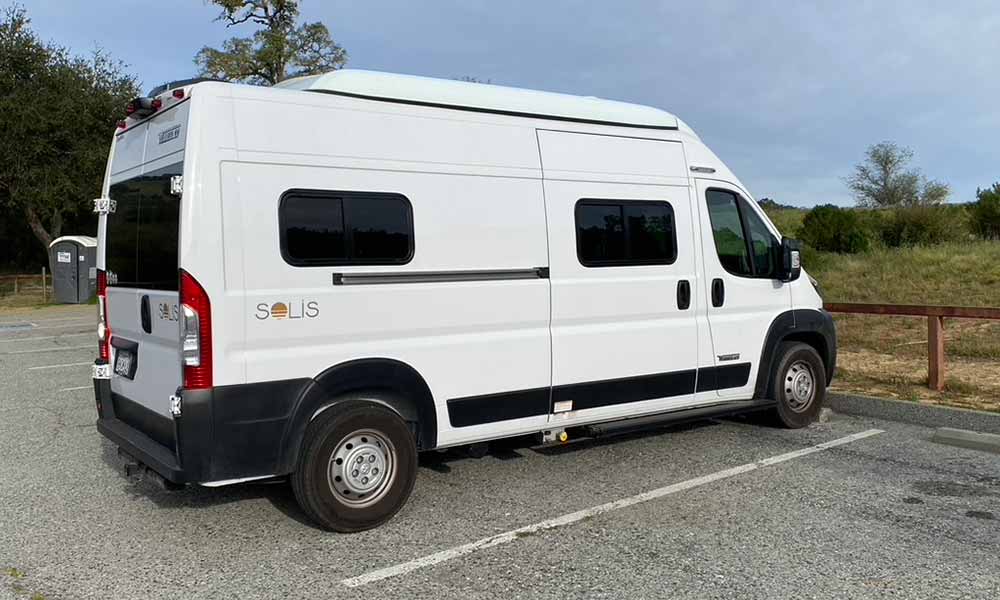There is no better reward for a dog lover than to be able to do what you love the most with your canine friend. Camping with your dog lets you connect to Mother Nature and your pet in such a uniquely gratifying way, and your canine friend gets to experience new surroundings, ones filled with new sights and sounds.
Research dog-friendly camping sites and familiarize yourself with the rules and regulations. Your dog is your constant companion. They should not be nervous or anxious, do a trial run at home if it is your dog’s first time camping. Pick out the right gear for your companion and opt to use a harness and leash combo.
Preparation is the keyword when wanting to camp with your canine friend. Making sure you have a checklist of all the required items and planning ahead of time, where they will sleep and how much food to take along, or even how to keep them entertained during your trip will go a long way to ease your stress once you are at the campsite.
Is Your Dog Ready To Go Camping
As much as we would love nothing more than to take our best friend with us camping, you need to first assess if your dog will enjoy camping.
Like us, not every dog enjoys camping, and they may have nervous or anxious tendencies. First, establish if your dog will enjoy camping by pitching your tent in your backyard or going to a nearby pet-friendly park for the night and having a trial run.
Is your dog properly trained? Will he respond to you if he gets lost from his leash, or will he just run amok and ignore your existence? Leaving you running around after him and stressing every minute of what should have been a relaxed camping getaway trip.
Are All Camp Sites Dog Friendly?
Not all camping sites are pet friendly, so doing your homework ahead of time and familiarizing yourself with the rules and regulations of having pets will save you a lot of disappointment when you get to camp and find that there are restrictions to where your dog can and cannot go.
Some parks only allow dogs on the paved trails to not disturb the wildlife. Some places only allow dogs on the camping ground; others won’t let your friend past the parking grounds.
Where Should My Dog Sleep?
Sleeping arrangements need to be thought of before heading off on your experience. There is generally wildlife around, and rules state that your dog must sleep in the tent with you.
Will they have their bed, or will they be sharing your comfy bed? What time of year also plays a role in where your dog will sleep? Will the weather be hot or cold? Does your companion only have a single-layer fur coat or not?
In colder temperatures, a single-layer coat dog may need to sleep with you to help them keep warm. Dogs with thicker coats may need their own space and a cooling mat for the warmer seasons. So Knowing what to bring and how the sleeping arrangements will work will help decide what you need to pack.
Tips For Camping With Your Dog
Dogs are part of the family, and camping with them means catering for their needs and those unexpected little accidents. Just like two-legged kids, your four-legged kid wants to explore and frolic in nature, but sometimes the excitement gets them into trouble.
So preparing a checklist dedicated to their needs is as important as doing one for you.
- Dog food and a bowl-bring enough dog food for the duration of your trip and some extra just in case. A plastic or collapsible bowl is ideal and lightweight when you have to bring it on your hike.
- A bowl for water and water-Bringing extra water on the trip is a great idea, especially if you find the unexpected happens and you are nowhere near a water source.
- Dog treats-great for keeping your dog entertained or when you need some helpful encouragement.
- If applicable, prescription medication– never forget your companion’s prescription medication if he has. Just as your medication is vitally important, so is his.
- Stake or tether-As most places will require your dog to be leashed. Having a stake to attach his leash to or tethering the dog to your waist helps free up your hands when setting up camp.
- Extra towels-For drying off your dog if they got wet in a storm or after swimming, even just cleaning up where they may have messed.
- Dog first-aid kit-Accidents happen, and having a first aid kit will prevent unnecessary vet trips while on your camping expedition. Also include products for fleas and ticks.
- Outdoor-safe toys-safe toys that you can easily spot outside when playing with your friend are important. You don’t want the area littered with forgotten and unseen dog toys with wildlife roaming around.
- A leash-always take an extra leash for that unforeseen incident, and most people combine a leash and harness just in case.
- A current photo-In case your friend decides to ditch you and you need to show people a photo to help identify him.
- An attachable ID tag-Update all your contact information on the ID tag and ensure it is properly secured to the collar.
- Dog waste bags-Always use dog waste bags to pick up any waste around your camp and on hikes; it’s just a courteous thing to do for other people sharing nature with you.
Should I Book An Appointment At The Vet For My Dog Before I Go Camping?
Before booking your trip, schedule a visit to the vet for your dog. Ensure that your companion is:
Current with all the vaccinations: Most parks and camping sites require proof of up-to-date vaccines before entering.
Use tick and flea prevention: Be aware that fleas and ticks are common. Although the outdoors can be an excellent place to have fun with your dog, know that ticks and fleas are common.
Microchipped: It is not a must to microchip your dog for campsites; however, it would be advisable to help reunite you with your companion should you get separated.
Groomed: although it might seem unnecessary to give your dog a good groom before a camping trip, it could be quite beneficial for them to have a good hair trim to help keep them from overheating in warm temperatures. Trimming their nails will help prevent their nails from getting caught on anything or breaking badly and injuring your friend.
Health: As with you, if your dog is not feeling well or has a form of a chronic illness, it would be best to ask your vet before venturing on a camping trip. Let your vet do a check-up and clear your dog for camping.
Conclusion
Camping with your dog can be a very satisfying and rewarding experience for you and your canine friend. But keeping in mind your dog’s willingness to camp and applying safety measures can make the camping experience even more enjoyable. Remember your checklists and always prepare for the unexpected.
And most of all, have fun!







